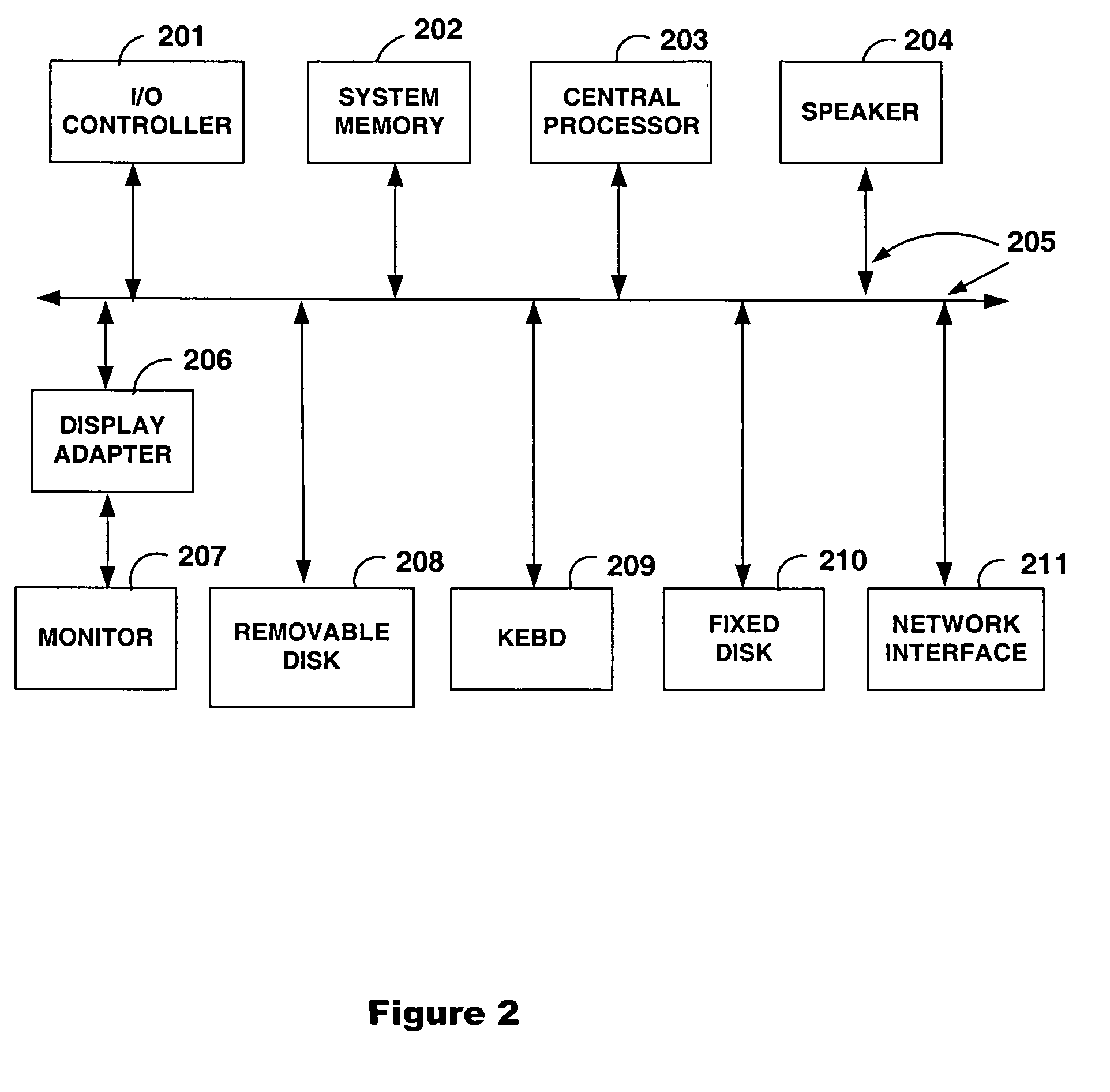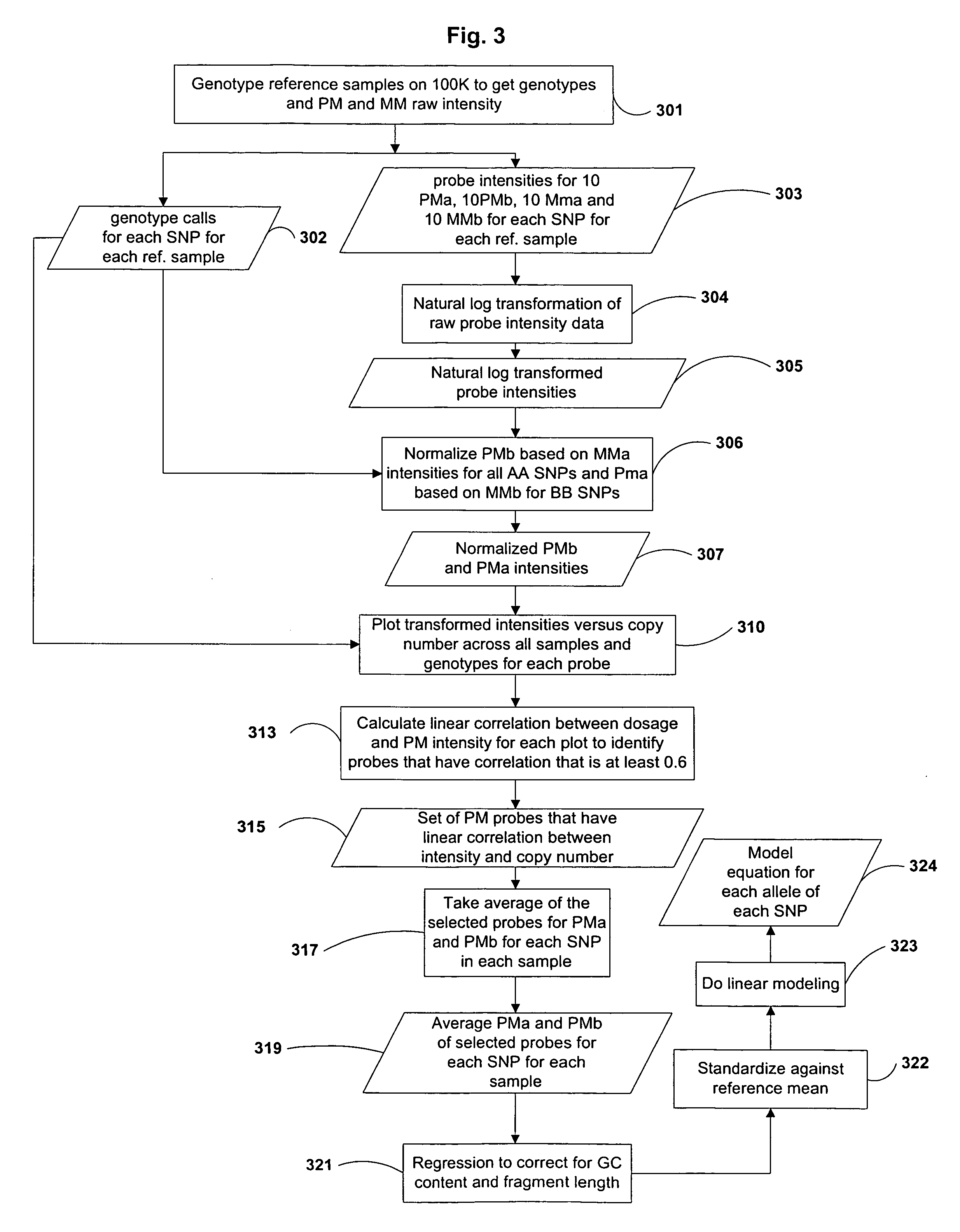Methods for identifying DNA copy number changes
a technology of dna copy number and dna copy number, which is applied in the field of methods of estimating the number of copies of a genomic region, can solve the problems of limiting the resolution to 10-20 mb, preventing the detection of small gains and losses, and the hybridization kinetics may not be as uniform
- Summary
- Abstract
- Description
- Claims
- Application Information
AI Technical Summary
Benefits of technology
Problems solved by technology
Method used
Image
Examples
example
Example 1
Estimation of Copy Number Using Allele Specific Probe Intensity Data
[0114] Sample DNA was amplified using the whole genome sampling assay (WGSA). Briefly, 250 ng genomic DNA is digested in 20 μl with 10 U of either Xba I or Hind III restriction enzyme (New England Biolabs) at 37° C. for 2 hr followed by heat inactivation at 70° C. for 20 min. The digested DNA is ligated in 25 μl with 0.25 μM Xba I adaptors or Hind III adaptors and 250 units T4 DNA ligase (New England Biolabs) at 16° C. for 2 hr followed by heat inactivation at 70° C. for 20 min. DNA amplification is carried out by PCR under the following conditions: each 100 μl reaction contains 25 ng adapter-ligated genomic DNA, 1 μM primer, 300 μM dNTPs, 1 mM MgSO4, 5 U Pfx polymerase (Invitrogen Corporation) in 1X Pfx Amplification buffer with 1X PCR enhancer (Invitrogen Corporation). Thermal cycling is performed at 94° C. for 3 min, followed by 30 cycles of 94° C. / 30 sec, 60° C. / 45 sec, 68° C. / 1 min, and a final exten...
PUM
| Property | Measurement | Unit |
|---|---|---|
| temperature | aaaaa | aaaaa |
| high density | aaaaa | aaaaa |
| density | aaaaa | aaaaa |
Abstract
Description
Claims
Application Information
 Login to View More
Login to View More - R&D
- Intellectual Property
- Life Sciences
- Materials
- Tech Scout
- Unparalleled Data Quality
- Higher Quality Content
- 60% Fewer Hallucinations
Browse by: Latest US Patents, China's latest patents, Technical Efficacy Thesaurus, Application Domain, Technology Topic, Popular Technical Reports.
© 2025 PatSnap. All rights reserved.Legal|Privacy policy|Modern Slavery Act Transparency Statement|Sitemap|About US| Contact US: help@patsnap.com



